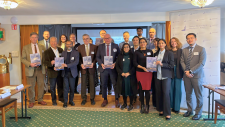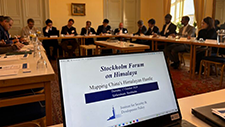Webinar Report-V: Climate Crisis in Tibet – Population Politics of Tibet: What Does It Mean to Social and Environmental Conditions?

Jarmila Ptáčková, Anton Harder, Kalpit A. Mankikar, Carole McGranahan, Tristan Eng, Anahita Poursafir, Ines Vassort and Jagannath Panda
This webinar, organized by the Stockholm Center for South Asian and Indo-Pacific Affairs (SCSA-IPA) at the Institute for Security and Development Policy (ISDP), was held on September 4, 2025, as the fifth in a series on the ‘Climate Crisis in Tibet’. This series seeks to address China’s long-term strategy for Tibet and its implications for social and environmental conditions. In this webinar, discussants examined Beijing’s comprehensive and multi-dimensional approach aimed at fully integrating Tibet into the Chinese nation-state, marked by intensified urbanization, displacement, and assimilation policies.
The current trajectory prioritizes urbanization and assimilation, gradually reducing Tibetans to one among many ethnic groups within urban municipalities, where no group retains distinct rights. As a result, many Tibetans are being displaced and relocated to frontier settlements or high-density concrete housing. Further, the Chinese authorities have tightened their grip on Tibetans’ lives through intensive surveillance, border control, and restrictions on movement. Tibetan farmers, removed from traditional lands and practices, find themselves reduced to wage laborers, disconnected from their historical relationship with the environment.
As the fifth installment in ISDP’s Climate Crisis in Tibet series, the webinar addressed the following key questions:
- What are the main goals behind China’s population and urbanization policies in Tibet, and how do they reflect broader state interests in national integration and territorial control?
- How have infrastructure developments facilitated demographic shifts in Tibet, and what are the social and cultural consequences of increased Han migration into the region?
- To what extent can the relocation of Tibetan villagers and the erosion of nomadic pastoral lifestyles be seen as forced assimilation rather than development or modernization?
- How are the Tibetan people coping? Has there been any pushback or is there
little recourse? - What are the environmental consequences of China’s policies and how are they connected to broader patterns of displacement and urbanization?




